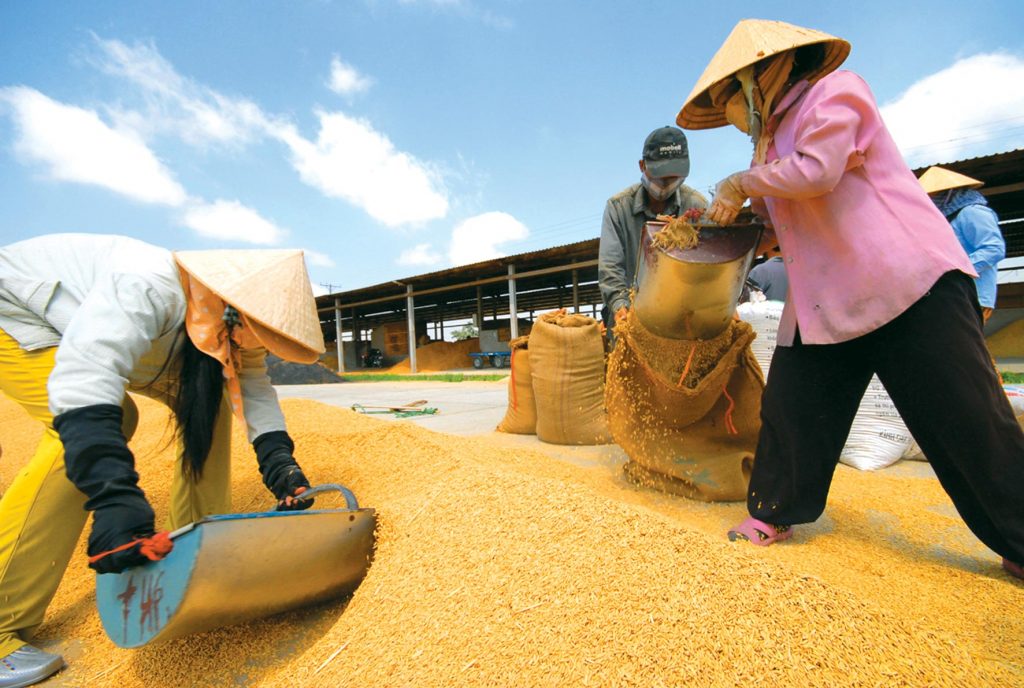Experts assert that Vietnamese rice is poised to fetch higher prices and enjoy increased demand in the 2023-2024 crop season due to a global shortage in supply.

According to the latest report from the Ministry of Industry and Trade, global rice production for the 2023-2024 season is lower than consumption levels, leading to an estimated shortage of around 7 million tons of rice worldwide. This shortfall positions Vietnam’s rice export industry at a significant advantage.
In the view of Dr. Vo Tri Thanh, Head of the Institute for Brand and Competitiveness Strategy Research, rice is a crucial export commodity closely tied to a nation’s brand and international reputation. Therefore, the export of rice must be managed skillfully to maximize economic benefits while ensuring domestic food security and macroeconomic stability.
Globally, there are few rice-exporting countries. Hence, reductions in reserves and extreme climate changes significantly affect rice production, prompting some nations to implement export restrictions that impact the international market.
“The role of major rice-exporting countries like Vietnam goes beyond business matters; it ensures food security for Vietnam, regional countries, and the world,” Dr. Vo Tri Thanh emphasized.
With the world facing a shortage of 7 million tons of rice, Vietnam stands to gain a great opportunity in exports. (Illustration)
Dr. Thanh believes Vietnam can seize the moment and achieve what the rice export industry accomplished in 2023. Last year, Vietnamese rice achieved a historic milestone by exporting 8.1 million tons valued at USD 4.8 billion, marking a 17.4% increase in volume and a 39.4% increase in value compared to the previous year. Notably, the average export price soared to USD 575 per ton.
“We continue to maintain national reserves while capitalizing on the rising global rice prices, ensuring these benefits reach businesses and citizens who are still grappling with the aftermath of COVID-19 and numerous difficulties such as delays and contract disruptions,” Dr. Thanh expressed optimism.
For businesses, the current rice market presents timing challenges: negotiating periods, contract signing, and purchasing from farmers, given the daily fluctuations in rice prices and everyone’s desire for maximum business gains.
“However, there is a critical need to enhance flexibility in contract signing to avoid disputes and preserve market credibility,” Dr. Thanh stressed.

What does Vietnam need to do to seize this “golden” opportunity?
Responding to VTC News, Professor Vo Tong Xuan believes that the global shortage of approximately 7 million tons of rice presents a significant opportunity for the people of the Mekong Delta and farmers nationwide to increase productivity and quality to meet Vietnam’s rice export demands.
However, to capitalize on this opportunity, Vietnam needs to aggressively expand cultivation areas by intensifying multiple-cropping practices while ensuring high-quality and safe rice farming practices as per established standards.
“Just in the Mekong Delta region alone, there are about 1.5 million hectares of rice-growing land. Normally, we produce two crops, but if necessary, we can produce three or even four crops, effectively doubling the area and rice output. This 1.5 million hectares are good quality rice-producing areas with reliable freshwater supply,” Mr. Xuan explained.
Mr. Xuan calculates that correctly implementing the four-cropping process could cultivate 6 million hectares, yielding a minimum of 5 tons of rice per hectare, with potential yields reaching 8-10 tons per hectare. With this potential, it provides favorable conditions to enhance production efficiency for export, thereby increasing incomes for rice-producing farmers.
However, Mr. Xuan emphasized that careful planning is essential in rice production to avoid oversupply issues, as some countries may also exploit this opportunity to intensify cropping.
Furthermore, Vietnam needs to further improve rice quality and proactively set selling prices to enhance the product’s value rather than constantly chasing global prices.
Regarding the goal of boosting rice exports without jeopardizing domestic food shortages, Professor Vo Tong Xuan believes this is not a significant concern, as regulatory bodies are aware of the rice quantity needed for domestic consumption and have mechanisms in place for stockpiling.
“In just 3.5 months, we will start a new harvest season, so despite enhancing rice exports, there is no concern about shortages,” Professor Vo Tong Xuan concluded.





